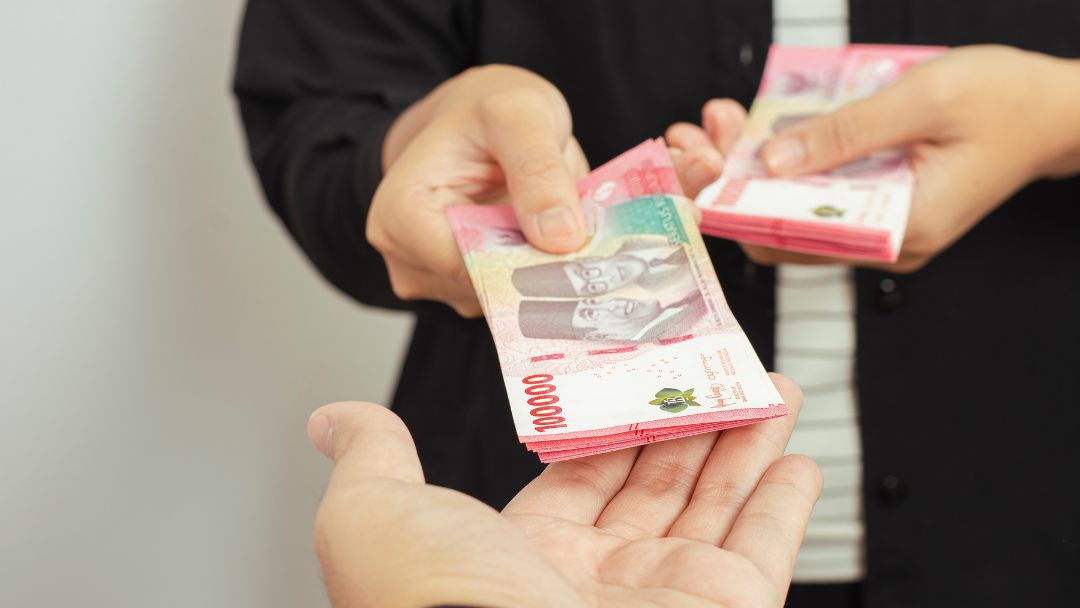Have you ever wondered what happens when a country finally takes its financial destiny into its own hands? Imagine you’ve been given a treasure chest of resources, but instead of spending it all in one go, you decide to invest it wisely to secure your future.
This is essentially what a Sovereign Wealth Fund (SWF) is about, and Indonesia’s decision to launch Danantara is an important step in shaping its economic future. But how will this fund work? Will it succeed? Is this move big brain energy or just another FOMO play in the global finance game? And, most importantly, what can we learn from other countries that have embarked on similar journeys? Let’s unpack.
What Is a Sovereign Wealth Fund (SWF)?
Before diving into the specifics of Danantara, let’s break down the basics. A Sovereign Wealth Fund (SWF) is essentially a state-owned investment fund that pools together financial assets to be invested in various financial instruments like stocks, bonds, real estate, or even private equity. The primary aim of an SWF is to manage the country’s surplus wealth, often derived from natural resources or fiscal surpluses, and to use it for long-term national development and stabilization. SWFs are powerful tools that, if managed well, can ensure that a nation’s wealth isn’t spent on short-term luxuries but invested for future generations.
SWF is like a country’s savings account on steroids. Think of it as a financial fortress where governments stash cash from natural resources, trade surpluses, or budget savings to invest in stuff that’ll pay off later. According to economist Andrew Ang (author of Asset Management: A Systematic Approach to Factor Investing), SWFs are “long-term investors with a national agenda.” Norway’s $1.7 trillion Government Pension Fund Global (GPFG), fueled by oil profits, is the OG example—funding pensions while ethically avoiding coal and weapons
Why Did Indonesia Create Danantara?
So why did Indonesia create Danantara? The creation of this sovereign wealth fund can be seen as a strategic response to a few key challenges. Indonesia, like many other resource-rich countries, has faced the challenge of managing its natural wealth—mainly derived from resources like oil and gas—so that it doesn’t experience the classic “Resource Curse” (as outlined by Richard Auty). This concept suggests that countries with abundant natural resources can often experience slower economic growth due to poor governance, corruption, and a lack of diversification.
Through Danantara, Indonesia aims to break free from this trap and create a more diversified, sustainable economy. The SWF will help manage the country’s wealth in a way that mitigates the impact of volatile global commodity prices, ensuring that economic growth remains steady, even when resource revenues fluctuate. It’s essentially about safeguarding Indonesia’s future, rather than simply relying on the ups and downs of resource extraction.
How Will Danantara Work?
Indonesia’s been hustling for years to fix its infrastructure gap (McKinsey says we need $500 billion by 2024!) and attract foreign investors tired of red tape shenanigans. Enter Danantara, launched in 2021 under the Omnibus Law reforms. But why now? Joseph Stiglitz, Nobel laureate in economics, argues that developing nations use SWFs to “diversify revenue streams beyond volatile commodities” (see Globalization and Its Discontents). With 17,000 islands and a FOMO-inducing shift to green energy, Indonesia’s betting big on Danantara to glow up its economy post-COVID.
Let’s take a deeper look at how Danantara will function. In line with the Public Finance Theory (as outlined in works by Richard Musgrave), the government will use Danantara to manage fiscal surpluses and potentially volatile revenues from sectors like oil, gas, and mining. Rather than letting these revenues disappear into day-to-day government expenditures, the SWF will invest them in a diversified portfolio. This will help stabilize Indonesia’s economy by ensuring there are funds available during times of economic downturn, while also creating a long-term growth engine through investments.
Danantara will likely operate with a governance structure that emphasizes transparency, accountability, and professional management of assets—principles rooted in Good Governance Theory. Effective governance is essential to ensure that the fund operates efficiently, generates returns, and avoids the mismanagement or corruption that can often plague such funds.
Danantara’s strategy is collab or die. Instead of solo investing, it partners with global players like the Asian Development Bank (ADB) and International Finance Corporation (IFC) to fund roads, ports, and renewable energy. The pitch? “You bring the cash; we’ll handle the permits.” But here’s the twist: 40% of Danantara’s initial $5 billion comes fromdebt. Yikes? Maybe. Daron Acemoglu’s Why Nations Fail warns that weak institutions can turn SWFs into “tools of elite capture.” To avoid this, Danantara’s governance includes a supervisory board with international experts—supposedly.
Benefits Vs Challenges
Let’s spill the tea on Danantara. On paper, Indonesia’s SWF sounds like the ultimate glow-up strategy—think of it as the country’s VIP ticket to economic stardom. But as any Gen Z investor knows, even the slickest portfolios come with risks. So, is Danantara a flex or a future fail? Let’s dissect.
The Bright Side: Why Danantara Could Slay
First, the vibes. Danantara isn’t just about stacking cash—it’s about rewiring Indonesia’s economy. Take diversification, for starters. For decades, Indonesia’s piggy bank relied heavily on coal, palm oil, and nickel. But as Economic Diversification Theory warns, putting all your eggs in the commodity basket is like betting your savings on Dogecoin—volatile AF. Danantara flips the script by investing in infrastructure, tech, and green energy. Imagine building solar farms in Java or smart ports in Sulawesi. This isn’t just about jobs (though Keynesian economics confirms infrastructure spending = jobs x10), it’s about future-proofing the economy.
Then there’s the long-term hustle. Paul Romer’s New Growth Theory isn’t just textbook fluff—it’s the cheat code for nations wanting to level up. By pumping funds into tech and education, Danantara could turn Indonesia into a Southeast Asian innovation hub. Think Silicon Valley vibes but with nasi goreng breaks. Plus, let’s not forget the smoothing effect. Norway’s SWF is the GOAT here—when oil prices tank, their $1.7 trillion fund keeps the economy chill. If Danantara plays its cards right, it could be Indonesia’s financial shock absorber during crises, like a financial Powerbank for rainy days.
And hey, let’s talk global clout. A well-run SWF isn’t just about cash—it’s soft power. Imagine Indonesia co-investing with Temasek or Saudi’s PIF on green hydrogen projects. Suddenly, Jakarta isn’t just hosting ASEAN meetings; it’s setting the agenda.
The Flip Side: Why Danantara Could Flop
But here’s the catch: SWFs are like TikTok fame—easy to gain, hard to sustain. Let’s start with the debt dilemma. Danantara’s launch isn’t all sovereign savings; 40% of its $5 billion kickstarter is borrowed money. If Danantara’s investments flop (say, a green energy project gets stuck in permit purgatory), Indonesia’s debt-to-GDP ratio could blow up faster than a viral meme.
Then there’s the governance ghost. Malaysia’s 1MDB scandal isn’t just a true-crime podcast plot—it’s a cautionary tale. Public Choice Theory (shoutout to Buchanan and Tullock) reminds us that when politicians control big money, corruption FOMO is real. Without ironclad transparency—like Norway’s obsessive public reporting—Danantara could morph into a slush fund for political elites. Imagine a “national development project” that mysteriously funds a minister’s luxury yacht. Not a good look.
And let’s not ignore the greenwashing trap. Nickel mining for EVs? Sure, it’s trendy, but ripping up Papua’s forests for “sustainable” batteries is peak hypocrisy. If Danantara doesn’t enforce strict ESG standards, Indonesia’s eco-friendly rep could crash faster than a Twitter update.
So, is Danantara a W or an L? It’s both. The fund’s success hinges on threading the needle between ambition and accountability. Nail the governance (no nepo babies on the board!), prioritize projects with real ROI (not just Insta-worthy ribbon cuttings), and keep the green promises legit.
But let’s keep it realistic: Global markets are ruthless. As the Resource Curse Theory warns, even the juiciest natural resources can’t save a nation that fails to diversify. Danantara is Indonesia’s chance to break the curse—or get cursed harder.
In the words of every finance bro ever: “Past performance is no guarantee of future results.” But if Indonesia plays this game smart? Danantara might just be the ultimate character arc for the nation’s economy.
Comparing Danantara with Other SWFs
Picture sovereign wealth funds (SWFs) as characters in a high-stakes Netflix drama. Each has its own origin story, superpower, and fatal flaw. Let’s meet the cast.
Norway’s GPFG: The Ethical Overachiever
Born from North Sea oil riches, Norway’s Government Pension Fund Global (GPFG) is the Hermione Granger of SWFs—book-smart, morally rigid, and lowkey iconic. With $1.7 trillion in assets, it’s the world’s largest SWF, but its real flex isn’t the cash—it’s the radical transparency. Every krone invested is publicly tracked, and its ethical screens ban coal, weapons, and companies caught in human rights messes. Norway’s lesson? Trust isn’t earned with spreadsheets; it’s built by showing your receipts. As economist Dani Rodrik might say, GPFG thrives because it dances gracefully between global markets and national values—no awkward missteps.
Singapore’s Temasek: The Venture Capitalist in a Suit
Temasek is that friend who’s always early on TikTok trends—nimble, risk-savvy, and obsessed with disruption. Unlike Norway’s slow-and-steady ethos, Temasek operates like a Silicon Valley VC. It threw cash at Alibaba before it was cool, backed ByteDance (TikTok’s parent), and even bet on lab-grown meat startups. Its secret sauce? Agility over bureaucracy. While most SWFs get bogged down by red tape, Temasek’s squad of 800 analysts moves fast, pivoting from biotech to blockchain like it’s swiping through a dating app. The takeaway? In a world where tech evolves faster than a viral dance, speed wins.
Saudi’s PIF: The Mega-Project Maverick
If Temasek is the tech bro, Saudi Arabia’s Public Investment Fund (PIF) is the ambition junkie with a Netflix budget. It’s building Neom—a $500B futuristic city in the desert—and owns stakes in Uber, Nintendo, and Newcastle United. PIF’s vibe? Go big or go home. But here’s the twist: Vision without execution is just a PowerPoint slide. While Neom’s renderings are jaw-dropping, skeptics wonder if it’ll ever move beyond CGI trailers. PIF’s lesson? Dreaming in 4K is easy; delivering in IMAX is hard.
Danantara: Indonesia’s Hybrid Hustle
Enter Danantara, Indonesia’s rookie SWF trying to remix the best of all worlds. It borrows Norway’s transparency goals, Temasek’s agility, and PIF’s ambition—but faces a villain none of the others have: political meddling. Indonesia’s dance with globalization, as Rodrik warns, is a tricky tango. Nationalism and global finance are “awkward partners,” and Danantara’s success hinges on nailing the choreography. Will it become a Temasek-style disruptor or get tripped up by bureaucracy and backroom deals?
The Plot Twist: Venezuela’s Cautionary Tale
Not all SWF stories have happy endings. Venezuela’s Fondo de Inversión de Venezuela (FIV) started with oil billions but ended in a tragedy of corruption and mismanagement. Politicians treated it like a personal ATM, and weak oversight turned the fund into a ghost town. The moral? Without governance on fleek, even the fattest piggy bank cracks.
Indonesia’s SWF isn’t just fighting for returns—it’s battling its own legacy. Can it dodge Venezuela’s fate while channeling Norway’s integrity, Temasek’s speed, and PIF’s boldness? The answer lies in its kryptonite: political will. If Jakarta keeps the fund independent, transparent, and focused on green-energy moonshots, Danantara could rewrite the SWF playbook. But if elites treat it like a slush fund? Cue the faceplant.
In the global SWF arena, there’s no one-size-fits-all script. Norway’s GPFG, Temasek, and PIF each carved their own path—ethics, agility, audacity. Now, Danantara’s writing its own chapter. Will it be a glow-up story or a cautionary tweet thread?
Will Danantara Succeed?
The big question: will Danantara succeed? The answer hinges on three things:
- Governance: If Danantara’s board stays independent (no nepo babies), it could mimic Norway’s success.
- Returns: Projects need IRR above borrowing costs. If not, debt piles up—we’re looking at you, Venezuela.
- Public trust: Regular audits and anti-corruption safeguards (like Indonesia’s KPK) are non-negotiable.
The potential is certainly there. Indonesia has a strong, growing economy, and if Danantara is managed with transparency, accountability, and a focus on long-term goals, it could play a pivotal role in stabilizing the economy and driving future growth. However, like any financial venture, it comes with risks—chief among them governance and global economic factors.
To increase the chances of success, Indonesia should take lessons from countries with successful SWFs, particularly in terms of governance, investment strategy, and long-term planning. If done right, Danantara could not only diversify Indonesia’s economy but also provide a steady financial foundation for generations to come.
If Danantara avoids the 1MDB curse and channels Temasek’s hustle, Indonesia’s economy could level up. But as Yanis Varoufakis warns in The Global Minotaur, “Global capital eats weak institutions for breakfast.”
Conclusion
Danantara is a bold move by Indonesia to secure its future. By creating a Sovereign Wealth Fund, Indonesia is taking a proactive step to manage its wealth, mitigate economic risks, and diversify its economy. But for it to succeed, strong governance, transparency, and strategic investment are key. With the right structure and management, Danantara could be a major player in shaping Indonesia’s economic future—and, who knows, it might just be the catalyst that sparks the country’s next economic boom. Watch this space!
Danantara isn’t just about money—it’s Indonesia’s bet on itself. Will it be a glow-up or a faceplant? Stay tuned, fam.
Drop your thoughts below! Is Danantara a W or an L? Let’s debate.






Leave a Reply